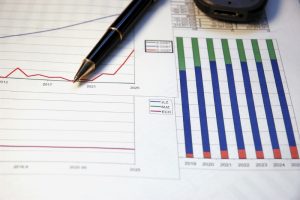On May 7, 2015, Conservatives defied the polls and won the UK general election, handing Labour and Liberal Democrats a surprising defeat. Now, with Chancellor George Osborne presenting his budget in a few days' time (July 8), the new Conservative government is tackling how it will deliver on its campaign promises. That means governmental computers have been crunching away to help the Treasury conduct its Spending Review 2015, showing how different departments have fared with their revenue and policy targets.
 Last year's budget included Chancellor Osborne's announcement that end-of-year paper tax returns will be scrapped in favour of real-time online accounts by 2020. Deemed "a revolutionary simplification of tax collection" by the Chancellor, it was confirmed that the government plans to switch to "digital tax accounts."
Last year's budget included Chancellor Osborne's announcement that end-of-year paper tax returns will be scrapped in favour of real-time online accounts by 2020. Deemed "a revolutionary simplification of tax collection" by the Chancellor, it was confirmed that the government plans to switch to "digital tax accounts."
That means that by 2020, instead of the annual rush to file tax returns, individuals and small businesses will be able to submit their affairs continuously via computer, tablet or smartphone – at any time throughout the year.
While it's still not certain what will be involved from a technology standpoint, it's clear that taxation is moving into real-time analysis -- a far cry from the current yearly review and audit process, and a welcome departure from the sometimes slow pace of reform within Her Majesty's Revenue and Customs (HMRC).
To ensure it will be able to extract the most value from this new method of processing tax obligations, HMRC will need to revamp its current assessment systems. Gut-feel analysis of data collected once a year won't be enough. Instead, they'll need to adopt advanced analytics systems that allow machine-learning or "artificial intelligence" to process all the data being continuously fed in. That's the only way to uncover new, unexpected insights – and to do it in real time.
The changes could lead to businesses and individuals being able to link their own accounting software and bank accounts to their digital tax accounts and feed information in directly, in real time. If so, the volume of data being processed will quickly burgeon to unmanageable volumes -- unless there are systems in place to read the data and extract value from the information as it's collected.
Rather than continuing with the current approach to analytics, cheaper commodity hardware combined with Hadoop would allow tax authorities like HMRC to carry out in-memory analytics and move risk-based decisions and processes alongside transactions while they’re happening. That would make it possible for anti-fraud and compliance measures to be maintained in real time, similar to the standards being deployed in the wider financial services sector.
Changes in how HMRC processes data will be vital in its journey towards 2020. In the last five years, HMRC has revolutionised the way it collects and analyses data to quickly identify tax evasion and fraud. Using advanced analytics, HMRC has already uncovered billions in additional tax revenue. The continued move towards a digital government means HMRC can benefit by creating the next big data Hadoop-based data hub, using real-time analytics at the point of transaction.
So, whatever Chancellor Osborne announces on July 8, it’s crucial that the government look at combining Hadoop with best-in-class analytics to make the right decisions -- and to help them operate at maximum efficiently as those daily decisions become increasingly automated.
Find out more about how SAS’ analytic strength combined with Hadoop’s low-cost, distributed data storage delivers new opportunities in this recent report.
